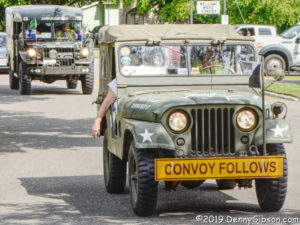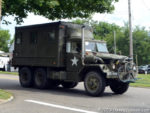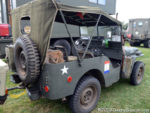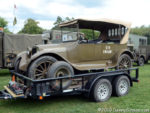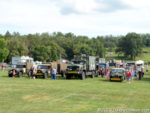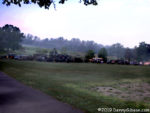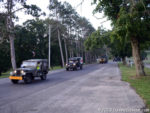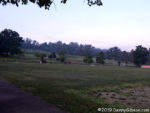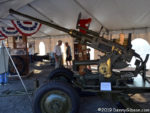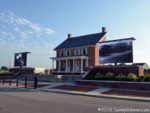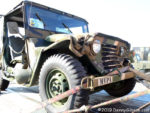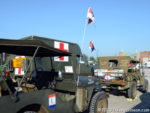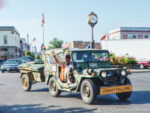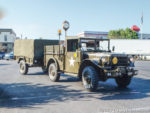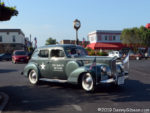 If something called a dixie existed, I have little doubt that we could refer to it differently without changing its aroma, but the word “dixie” doesn’t really identify anything. It is not, in other words, a common noun. As a proper noun — with a capital ‘D’ — it is used as both a surname and a given name and to identify a wide variety of things including a region of our country. People with a first, last, or nickname of Dixie surely outnumber things bearing the name but there are certainly plenty of those. It has been used to identify buildings, songs, currency, music groups, towns, counties, movies, beer, boats, ships, taverns, race tracks, waterways, restaurants, mountain ranges, athletic conferences, grocery stores, airports, schools, universities, and much more. With an ‘X’ made of a stylized flower, Dixie is a registered trademark of Georgia-Pacific for a brand of paper products.
If something called a dixie existed, I have little doubt that we could refer to it differently without changing its aroma, but the word “dixie” doesn’t really identify anything. It is not, in other words, a common noun. As a proper noun — with a capital ‘D’ — it is used as both a surname and a given name and to identify a wide variety of things including a region of our country. People with a first, last, or nickname of Dixie surely outnumber things bearing the name but there are certainly plenty of those. It has been used to identify buildings, songs, currency, music groups, towns, counties, movies, beer, boats, ships, taverns, race tracks, waterways, restaurants, mountain ranges, athletic conferences, grocery stores, airports, schools, universities, and much more. With an ‘X’ made of a stylized flower, Dixie is a registered trademark of Georgia-Pacific for a brand of paper products.

 In the 1960s, an all-girl singing group borrowed the name — without the flowery ‘X’ — of those familiar disposable cups and topped the charts with hits like “Chapel of Love” and “Iko Iko”. Near the end of the twentieth century, another all-girl group hit the charts with a name containing the word “dixie”. That group, the Dixie Chicks, generated some controversy, but it came from political statements and not from their name. I’m not aware of any controversy at all associated with the Dixie Cups, and I’m guessing that they didn’t consider the word “dixie” to be racist.
In the 1960s, an all-girl singing group borrowed the name — without the flowery ‘X’ — of those familiar disposable cups and topped the charts with hits like “Chapel of Love” and “Iko Iko”. Near the end of the twentieth century, another all-girl group hit the charts with a name containing the word “dixie”. That group, the Dixie Chicks, generated some controversy, but it came from political statements and not from their name. I’m not aware of any controversy at all associated with the Dixie Cups, and I’m guessing that they didn’t consider the word “dixie” to be racist.
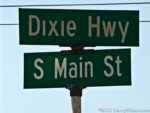 But recently the word has been associated with racism by some. The Dixie Highway has been included in some of these claims which naturally caused me to take notice. It is an outgrowth of the rise of controversy and confrontation over Confederate monuments and streets named after Confederate generals. If the move to change a roughly six-mile-long street from Hood to Hope was complicated, renaming a piece of the nearly 6,000-mile-long Dixie Highway must be at least three orders of magnitude more so.
But recently the word has been associated with racism by some. The Dixie Highway has been included in some of these claims which naturally caused me to take notice. It is an outgrowth of the rise of controversy and confrontation over Confederate monuments and streets named after Confederate generals. If the move to change a roughly six-mile-long street from Hood to Hope was complicated, renaming a piece of the nearly 6,000-mile-long Dixie Highway must be at least three orders of magnitude more so.
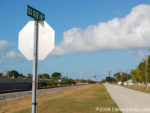 The aforementioned Hood Street was in Hollywood, FL, where three streets (Hood, Lee, and Forest) were renamed (Hope, Liberty, and Freedom) in November 2017. In Riviera Beach, FL, a couple of miles of Old Dixie Highway were renamed President Barack Obama Highway in 2015. The picture at left was taken between the two, near Boyton Beach. Of course, the word “dixie” had nothing to do with the renamings in Hollywood. The generals after which the streets were named had clearly been chosen because of their roles in the Confederacy. The word didn’t have much to do with the name change in Riviera Beach, either. Residents cited the role of the street as a dividing line between black and white and the site of KKK cross burnings.
The aforementioned Hood Street was in Hollywood, FL, where three streets (Hood, Lee, and Forest) were renamed (Hope, Liberty, and Freedom) in November 2017. In Riviera Beach, FL, a couple of miles of Old Dixie Highway were renamed President Barack Obama Highway in 2015. The picture at left was taken between the two, near Boyton Beach. Of course, the word “dixie” had nothing to do with the renamings in Hollywood. The generals after which the streets were named had clearly been chosen because of their roles in the Confederacy. The word didn’t have much to do with the name change in Riviera Beach, either. Residents cited the role of the street as a dividing line between black and white and the site of KKK cross burnings.
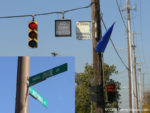 Although I’d have preferred it hadn’t happened, I have no serious objection to the Riviera Beach action. It was based on specific and painful memories. That doesn’t always appear to be the case when replacing the Dixie Highway name is proposed. Published reports of these proposals have occasionally prompted me to send emails to people connected with them. It is not done to protest but to inform. We road fans often comment — and sometimes laugh or cry — about people being completely oblivious to a major historic highway running right by their door. Knowing how common that is with “celebrities” like the Lincoln Highway and Route 66, we shouldn’t be surprised that it is even more often the case with the lesser known and more complex Dixie Highway. Not knowing just how important or far-reaching all the roads in your neighborhood once were is a pretty natural situation.
Although I’d have preferred it hadn’t happened, I have no serious objection to the Riviera Beach action. It was based on specific and painful memories. That doesn’t always appear to be the case when replacing the Dixie Highway name is proposed. Published reports of these proposals have occasionally prompted me to send emails to people connected with them. It is not done to protest but to inform. We road fans often comment — and sometimes laugh or cry — about people being completely oblivious to a major historic highway running right by their door. Knowing how common that is with “celebrities” like the Lincoln Highway and Route 66, we shouldn’t be surprised that it is even more often the case with the lesser known and more complex Dixie Highway. Not knowing just how important or far-reaching all the roads in your neighborhood once were is a pretty natural situation.
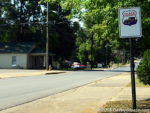 It seems that even we fans don’t always consider that “far-reaching” bit. It’s OK to be saddened by a name change, but there is no reason to verbally abuse, as I’ve seen too many times, those backing a change. Removing the name Dixie Highway from a few miles of Florida — or other — roadway is not going to affect all those other miles any more than Cheyenne, WY, (The first town to do so.) changing its Main Street to Lincoln Way impacted the rest of the continent crossing highway. The Dixie Highway, as well as every other named auto trail, was never labeled with its name in every jurisdiction it passed through. Numbered US and state highways utilize streets and roads with all sorts of names. Not one inch of US-66 officially exists at present yet people follow it every day. The Adairsville, GA, pavement in the picture at left is officially named and signed Main Street but that doesn’t change its past as a part of the Dixie Highway or prevent it being unofficially marked as such.
It seems that even we fans don’t always consider that “far-reaching” bit. It’s OK to be saddened by a name change, but there is no reason to verbally abuse, as I’ve seen too many times, those backing a change. Removing the name Dixie Highway from a few miles of Florida — or other — roadway is not going to affect all those other miles any more than Cheyenne, WY, (The first town to do so.) changing its Main Street to Lincoln Way impacted the rest of the continent crossing highway. The Dixie Highway, as well as every other named auto trail, was never labeled with its name in every jurisdiction it passed through. Numbered US and state highways utilize streets and roads with all sorts of names. Not one inch of US-66 officially exists at present yet people follow it every day. The Adairsville, GA, pavement in the picture at left is officially named and signed Main Street but that doesn’t change its past as a part of the Dixie Highway or prevent it being unofficially marked as such.
 Most of the talk about renaming sections of the Dixie Highway has originated in Florida. In some sense, that’s ironic since the Dixie Highway was a major factor in the development of the state. On the other hand, development is rarely 100% beneficial to all and I’ve no doubt that many were negatively impacted by the development and the road that helped it along. Plus, as those Riviera Beach memories show, experiences generate stronger feelings than a name or a physical path ever could. About two weeks ago, the New York Times published an article based on discussions in Florida’s Miami-Dade County. Its audience was almost certainly wider than that of similar articles publishes by Florida based news organizations. One indication of that was a small but obvious two-day blip in visits to an eight-year-old Dixie Highway related post on this blog. Maybe that’s somehow fitting since I’ve often quoted the Times when trying to convey that the Dixie Highway is not inherently evil. In 1915, the paper referred to the route as “The Dixie Peaceway” when it reported the formation of the Dixie Highway Association. It described the road as “a monument to celebrate the half-century of peace within the Union”. Maybe that was hyperbole or maybe it really reflected the feelings of the time. If so, it seems extra sad that so many see it as something entirely different today.
Most of the talk about renaming sections of the Dixie Highway has originated in Florida. In some sense, that’s ironic since the Dixie Highway was a major factor in the development of the state. On the other hand, development is rarely 100% beneficial to all and I’ve no doubt that many were negatively impacted by the development and the road that helped it along. Plus, as those Riviera Beach memories show, experiences generate stronger feelings than a name or a physical path ever could. About two weeks ago, the New York Times published an article based on discussions in Florida’s Miami-Dade County. Its audience was almost certainly wider than that of similar articles publishes by Florida based news organizations. One indication of that was a small but obvious two-day blip in visits to an eight-year-old Dixie Highway related post on this blog. Maybe that’s somehow fitting since I’ve often quoted the Times when trying to convey that the Dixie Highway is not inherently evil. In 1915, the paper referred to the route as “The Dixie Peaceway” when it reported the formation of the Dixie Highway Association. It described the road as “a monument to celebrate the half-century of peace within the Union”. Maybe that was hyperbole or maybe it really reflected the feelings of the time. If so, it seems extra sad that so many see it as something entirely different today.
Those people who found this site after reading the New York Times article didn’t learn a whole lot during their visit but they were obviously curious. They were brought by search engines which may have also taken them to other sites where they learned much more. Whether curiosity was their only reason for visiting or they were decision-makers gathering background, I’ll never know. Regardless, I suspect we will see a few more miles of Dixie Highway get renamed before it’s all over. That’s unfortunate but hardly a disaster. No matter the name, it will still smell like a rose — or maybe an orange blossom — with strong undertones of asphalt and Model T brake bands.
ADDENDUM 9-Feb-2020: Some thoughts on the markers placed along the Dixie Highway by the United Daughters of the Confederacy were considered for this post but have been given their own post instead. Free? Advertising on the Dixie
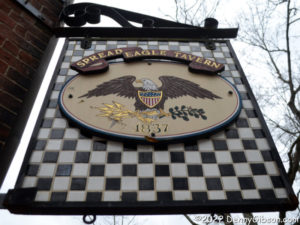 Tuesday was my birthday, and there was a blog post that day more or less announcing it and revealing that I had removed from my body the only thing about it that was getting thinner. This post describes the far-ranging travel and wild celebration that filled the day. The party actually started in early morning when I met my buddy John for breakfast in Wilmington. I left there thinking I might follow US-22 all the way to Steubenville but a prediction of rain prompted me to switch to a shorter path using US-62 at Washington Courthouse, and congestion, as I neared Columbus, nudged me onto a faster expressway route. In fact, I gave myself up to the GPS at that point and Garmin kept me on I-71 until I reached US-30 near Mansfield.
Tuesday was my birthday, and there was a blog post that day more or less announcing it and revealing that I had removed from my body the only thing about it that was getting thinner. This post describes the far-ranging travel and wild celebration that filled the day. The party actually started in early morning when I met my buddy John for breakfast in Wilmington. I left there thinking I might follow US-22 all the way to Steubenville but a prediction of rain prompted me to switch to a shorter path using US-62 at Washington Courthouse, and congestion, as I neared Columbus, nudged me onto a faster expressway route. In fact, I gave myself up to the GPS at that point and Garmin kept me on I-71 until I reached US-30 near Mansfield.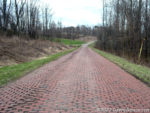
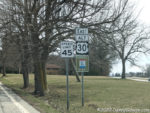
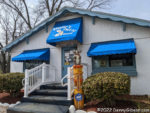 I continued blindly following the voice in the box until a glimpse of a semi-familiar cheese shop brought me to my senses. Shisler’s Cheese House is a place I normally associate with the Lincoln Highway so, after picking up some Swiss and cheddar to munch on later, I sought out a few bits of the old road. I made a side trip in Canton but returned to the old Lincoln and the brick Baywood Street in Robertsville.
I continued blindly following the voice in the box until a glimpse of a semi-familiar cheese shop brought me to my senses. Shisler’s Cheese House is a place I normally associate with the Lincoln Highway so, after picking up some Swiss and cheddar to munch on later, I sought out a few bits of the old road. I made a side trip in Canton but returned to the old Lincoln and the brick Baywood Street in Robertsville.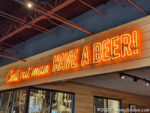
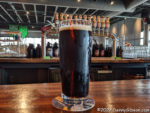 The target of my Canton excursion was Fat Head’s newest brewpub at the north edge of town. Fat Head’s started in Pittsburgh, PA, in 1992 and opened this location, their fourth, in 2018. That’s Black Knight Schwarzbier in the glass.
The target of my Canton excursion was Fat Head’s newest brewpub at the north edge of town. Fat Head’s started in Pittsburgh, PA, in 1992 and opened this location, their fourth, in 2018. That’s Black Knight Schwarzbier in the glass.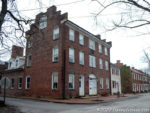
 The place that the GPS had been leading me to was the Spread Eagle Tavern in Hanoverton. The picture at the top of this post is of the tavern’s sign. Hanoverton is a Lincoln Highway town so I’ve stopped at the Spread Eagle several times. I have eaten there once but had never stayed there. I corrected that by spending Tuesday night in the Van Buren Room. It’s the inn’s smallest in both space and price but was more than adequate for me.
The place that the GPS had been leading me to was the Spread Eagle Tavern in Hanoverton. The picture at the top of this post is of the tavern’s sign. Hanoverton is a Lincoln Highway town so I’ve stopped at the Spread Eagle several times. I have eaten there once but had never stayed there. I corrected that by spending Tuesday night in the Van Buren Room. It’s the inn’s smallest in both space and price but was more than adequate for me.
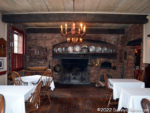
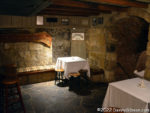 Between check-in and dinner, I was able to see familiar rooms empty for the first time and make first-time visits to some other spaces. This second group included the lower level rathskeller which is currently open only on Fridays and Saturdays. The tavern first opened in 1837 but had fallen into disrepair until a major restoration took place in the late 1980s. Additions and improvements (such as converting the dirt-floored basement to the brick-lined rathskeller) happened, but all materials came from either the tavern itself or other badly neglected buildings from the same period.
Between check-in and dinner, I was able to see familiar rooms empty for the first time and make first-time visits to some other spaces. This second group included the lower level rathskeller which is currently open only on Fridays and Saturdays. The tavern first opened in 1837 but had fallen into disrepair until a major restoration took place in the late 1980s. Additions and improvements (such as converting the dirt-floored basement to the brick-lined rathskeller) happened, but all materials came from either the tavern itself or other badly neglected buildings from the same period.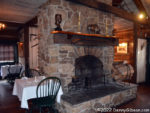 I ate dinner at a table just out of frame on the left side of this picture and breakfast just out of frame on the right. I failed to get a picture of breakfast which is truly sad because it was one of the best breakfasts I’ve ever had and it was included with the room. I was just too busy chatting with Kim, my server, about the building and other topics both related and not. I had been better prepared at dinner and did get a snapshot of my wonderful walleye by candlelight.
I ate dinner at a table just out of frame on the left side of this picture and breakfast just out of frame on the right. I failed to get a picture of breakfast which is truly sad because it was one of the best breakfasts I’ve ever had and it was included with the room. I was just too busy chatting with Kim, my server, about the building and other topics both related and not. I had been better prepared at dinner and did get a snapshot of my wonderful walleye by candlelight. 

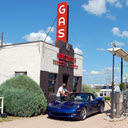
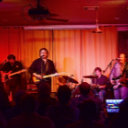
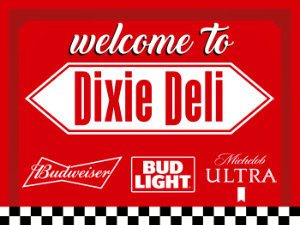 Seeing things like signs, banners, and menus for local businesses bearing the logo of some large corporation is quite common. Details vary but the basic model is that the big corporation shoulders some or all of the cost and the small business gets some advertising for little or nothing. The idea is hardly new and the concept has never been restricted to purely commercial enterprises. During the last half of the 1920s, a pairing of this sort existed between a major highway and an American hereditary association. The major highway was, of course, the Dixie Highway. The hereditary association was the
Seeing things like signs, banners, and menus for local businesses bearing the logo of some large corporation is quite common. Details vary but the basic model is that the big corporation shoulders some or all of the cost and the small business gets some advertising for little or nothing. The idea is hardly new and the concept has never been restricted to purely commercial enterprises. During the last half of the 1920s, a pairing of this sort existed between a major highway and an American hereditary association. The major highway was, of course, the Dixie Highway. The hereditary association was the  The UDC was the “advertiser” in this instance. Between 1926 and 1935 the organization was responsible for at least ten plaques being erected beside the highway. It’s unclear whether or not the Dixie Highway Association was an active participant in this arrangement. Because the 1926 creation of the United States Numbered Highway System brought an end to all of the named auto trails, the DHA was not very active at this point.
The UDC was the “advertiser” in this instance. Between 1926 and 1935 the organization was responsible for at least ten plaques being erected beside the highway. It’s unclear whether or not the Dixie Highway Association was an active participant in this arrangement. Because the 1926 creation of the United States Numbered Highway System brought an end to all of the named auto trails, the DHA was not very active at this point. Combined, the previous picture and the one at right show the ten plaques in north to south sequence. The northernmost marker is in Ohio, the southernmost is in Florida, the one preceding it is in South Carolina, and the others are in North Carolina. Except for the date erected, eight of the plaques are identical. The one in Florida contains the same text as those eight but has a different image of Lee. The one in South Carolina contains different text but has the same image as the bulk of the plaques.
Combined, the previous picture and the one at right show the ten plaques in north to south sequence. The northernmost marker is in Ohio, the southernmost is in Florida, the one preceding it is in South Carolina, and the others are in North Carolina. Except for the date erected, eight of the plaques are identical. The one in Florida contains the same text as those eight but has a different image of Lee. The one in South Carolina contains different text but has the same image as the bulk of the plaques.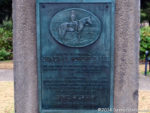

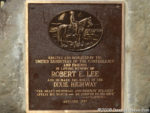
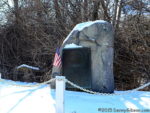
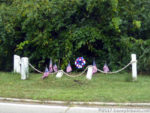
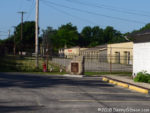
 If something called a dixie existed, I have little doubt that we could refer to it differently without changing its aroma, but the word “dixie” doesn’t really identify anything. It is not, in other words, a common noun. As a proper noun — with a capital ‘D’ — it is used as both a surname and a given name and to identify a wide variety of things including a region of our country. People with a first, last, or nickname of Dixie surely outnumber things bearing the name but there are certainly plenty of those. It has been used to identify buildings, songs, currency, music groups, towns, counties, movies, beer, boats, ships, taverns, race tracks, waterways, restaurants, mountain ranges, athletic conferences, grocery stores, airports, schools, universities, and much more. With an ‘X’ made of a stylized flower, Dixie is a registered trademark of Georgia-Pacific for a brand of paper products.
If something called a dixie existed, I have little doubt that we could refer to it differently without changing its aroma, but the word “dixie” doesn’t really identify anything. It is not, in other words, a common noun. As a proper noun — with a capital ‘D’ — it is used as both a surname and a given name and to identify a wide variety of things including a region of our country. People with a first, last, or nickname of Dixie surely outnumber things bearing the name but there are certainly plenty of those. It has been used to identify buildings, songs, currency, music groups, towns, counties, movies, beer, boats, ships, taverns, race tracks, waterways, restaurants, mountain ranges, athletic conferences, grocery stores, airports, schools, universities, and much more. With an ‘X’ made of a stylized flower, Dixie is a registered trademark of Georgia-Pacific for a brand of paper products.






 There are things that fans of old roads or of transportation history in general falsely assume that everyone knows about. One such item is the continent crossing Motor Transport Corps convoy of 1919. In the summer following the end of the first World War, a group of military personnel and vehicles set off from Washington, DC, to test the nation’s roads all the way to San Francisco. Although he was primarily an observer on the trip, his future accomplishments make Dwight Eisenhower the member of the convoy best-known today. Michael Owen uses the future president’s nickname in naming this telling of his own retracing of the 3,250-mile-long path that some 300 men and 81 vehicles of all shapes and sizes followed a century ago.
There are things that fans of old roads or of transportation history in general falsely assume that everyone knows about. One such item is the continent crossing Motor Transport Corps convoy of 1919. In the summer following the end of the first World War, a group of military personnel and vehicles set off from Washington, DC, to test the nation’s roads all the way to San Francisco. Although he was primarily an observer on the trip, his future accomplishments make Dwight Eisenhower the member of the convoy best-known today. Michael Owen uses the future president’s nickname in naming this telling of his own retracing of the 3,250-mile-long path that some 300 men and 81 vehicles of all shapes and sizes followed a century ago.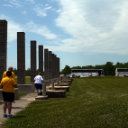
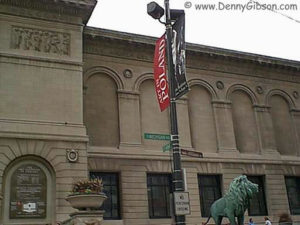
 A lot of things about the site have changed over the years but some things begun with that first trip have stuck. The concept of a page for each day with access to the next and previous day has been in place since the beginning as has a cover page with direct access to individual days. The idea of using the daily “Next’ and “Prev” button to (usually) represent the vehicle being used also goes back to that first trip. An animated GIF showing progress has been used on a few subsequent trips but it requires knowing the full route in advance and that’s often not the case. Besides, it’s a fair amount of work.
A lot of things about the site have changed over the years but some things begun with that first trip have stuck. The concept of a page for each day with access to the next and previous day has been in place since the beginning as has a cover page with direct access to individual days. The idea of using the daily “Next’ and “Prev” button to (usually) represent the vehicle being used also goes back to that first trip. An animated GIF showing progress has been used on a few subsequent trips but it requires knowing the full route in advance and that’s often not the case. Besides, it’s a fair amount of work.
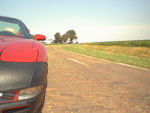
 The final cover page for that trip talks about it being temporary. As I said at the time, I expected it to go away because “I’ll need the space or retiring it will just seem right.” Web space became increasingly cheap and apparently retiring it never seemed right. Two decades later that first trip journal is still online and I’ve added 155 more. There is a
The final cover page for that trip talks about it being temporary. As I said at the time, I expected it to go away because “I’ll need the space or retiring it will just seem right.” Web space became increasingly cheap and apparently retiring it never seemed right. Two decades later that first trip journal is still online and I’ve added 155 more. There is a 